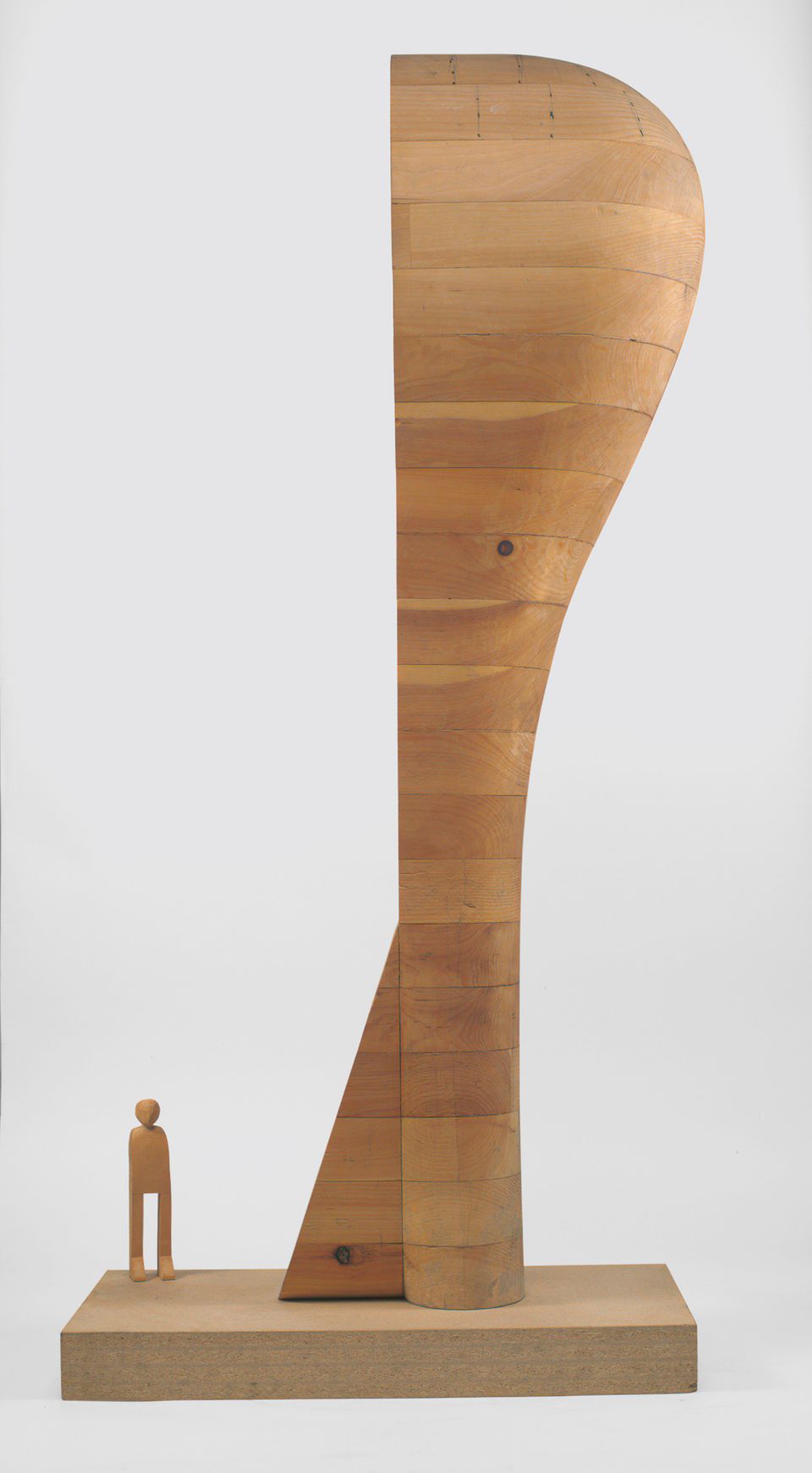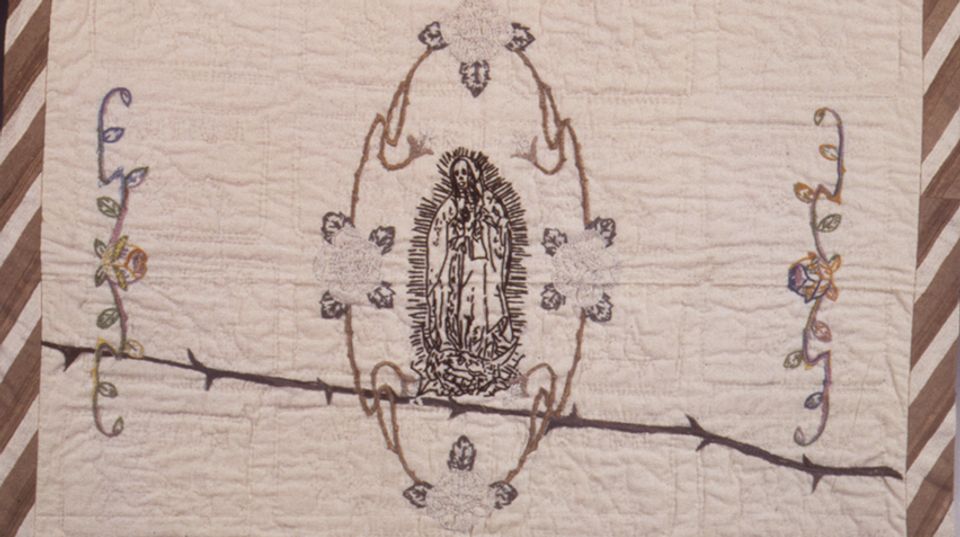
Martin Puryear, Maquette for Bearing Witness, 1994, pine, Courtesy of the artist. © Martin Puryear, Courtesy Matthew Marks Gallery. Photography by Jamie Stukenberg, Professional Graphics

SAAM's Curator of Sculpture, Karen Lemmey, recently joined forces with the GSA Art in Architecture Program's fine arts specialist Bill Caine to lead a "walk and talk" discussion about the importance of public art. Since 1972, the Art in Architecture program has reserved a small piece of the construction budget for new federal buildings around the country for public works of art. In nearly forty-five years, the program has commissioned five-hundred artworks, including Martin Puryear's Bearing Witness, the focus of this hour-plus program.
The maquette for Bearing Witness is currently on view in SAAM's monographic exhibition Martin Puryear: Multiple Dimensions. The real thing, the forty-foot tall and 20,000 pound monumental work of overlapping patinated bronze sheets was erected in the courtyard of the Ronald Reagan Building (a short walk from the museum) in 1997 and holds the space with its larger-than-life presence that feels both modern and primitive at the same time.
Inside the exhibition space at SAAM, Lemmey offered a brief overview of Puryear's work and what the artist refers to as the "spiraling" of images that recur in his work across media as well as forwards and backwards in time. Multiple Dimensions is the first exhibition of the artist's oeuvre to feature works on paper in context with sculptures to give us insights into Puryear's methods and transformative process. It's a bit like a hall of mirrors (albeit without any mirrors) where an image bounces back and forth between the various works in the gallery, changing shape slightly, but always remaining recognizable. Puryear's drawings become a paper trail where he expressed ideas that would eventually become realized in his larger, outdoor works. The human head is a recurring motif and head-like shapes can be found in both two- and three-dimensional works throughout the gallery. This includes the maquette for Bearing Witness (1994) which evokes the back of a head and was possibly inspired by elongated African Fang masks.
One of the things that defines public sculpture is scale, and Puryear often works on a monumental scale, in both his indoor and outdoor works. "For so long public sculpture was about the body, portraiture, often statesmen on horses, but here it is abstracted," Lemmey told us, adding, "You really can get right up to this piece. It invites you to relate to it...there's no pedestal. It's elevated and takes you right up with it."
A piece like Bearing Witness or Puryear's newest public sculpture, Big Bling (currently on view in New York's Madison Square Park through January, and whose maquette is in the SAAM exhibition), is often built with fabricators. "For Bearing Witness," Caine told us, "Puryear worked with a shipbuilding company in Rhode Island and the sculpture was made very much like a boat."
When we got to the Reagan building we looked at the sculpture in terms of its environment and how it references the architecture of the surrounding buildings, including what was once a post office in the 1930s. We learned that Puryear picked the site of the installation within the perimeter of the project, and wanted it to face out. Outdoor sculpture also invites us to get up close with it, even touch it. This, of course, means the sculpture has an ongoing maintenance plan, mostly to apply a new layer of heated wax to protect its surface. But what does the sculpture mean? For that, we'll have to refer to Puryear's enigmatic remarks at the recent opening of Big Bling, "I trust my public's imagination," he told the assembled crowd, "I trust their eyes to find meaning."
Martin Puryear: Multiple Dimensions remains on view through September 5, 2016.
















